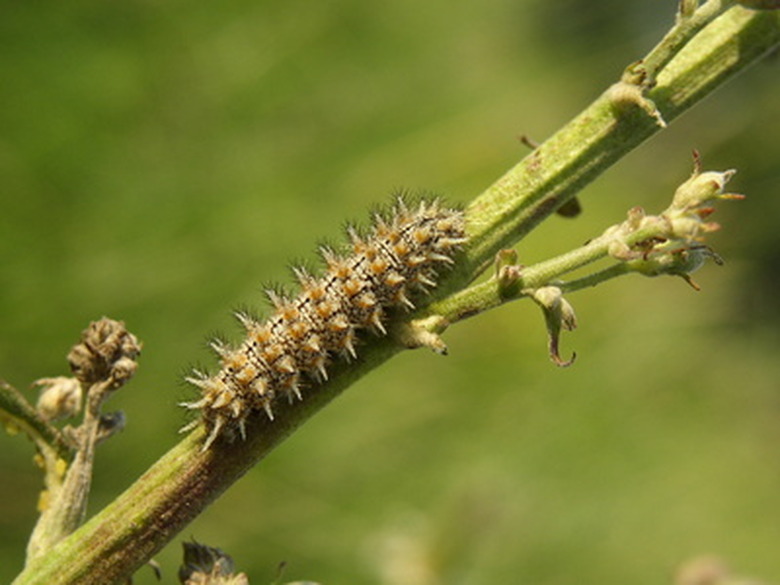How To Prevent Tomato Worms On Your Plants
Things Needed
- Paper cups
- Organic soil amendments
- Mulch
- Compost
- Companion plants
- Bird feeder
- Eggshells
- Rototiller
- Bacillus thuringiensis
The sight of giant worms clinging to the underside of your tomato leaves, especially the nearly 4-inch-long, green tomato hornworm, is better prevented than experienced. The hornworm can strip a plant of foliage quite rapidly, notes the University of Florida IFAS Extension. Other worms–actually caterpillars–can kill young plants by girdling their stems or damage fruit. Many of the techniques to prevent tomato-targeting worms will boost the overall health of your vegetable garden.
Step 1
Remove grass and plow the soil well in advance of planting to prevent cutworms, stout grey or black caterpillars that may reach almost 2 inches in length, recommends the University of Florida. Press small sleeves made from the paper cups with the bottoms cut out over the plant and into the soil to create a physical barrier.
Step 2
Add organic matter to the soil and water it regularly, especially in times of drought, to prevent activity of the lesser cornstalk borer, a small caterpillar ranging from ¼ to ¾ inches in length banded with aqua and wine-colored bands.
- The sight of giant worms clinging to the underside of your tomato leaves, especially the nearly 4-inch-long, green tomato hornworm, is better prevented than experienced.
- Add organic matter to the soil and water it regularly, especially in times of drought, to prevent activity of the lesser cornstalk borer, a small caterpillar ranging from ¼ to ¾ inches in length banded with aqua and wine-colored bands.
Step 3
Plant tomatoes as early in the spring as possible to avoid infestations of armyworms, frequently around 1 ½ inches long and in colors including tan, green, gray to black, often with stripes.
Step 4
Avoid chemical pesticides and use mulch and compost to create a bug-friendly garden. Wasps will find the tobacco and tomato hornworms and lay parasitic eggs on the caterpillars that will kill them. The larvae of hover flies, which like sunflowers, will attack caterpillars, as will assassin flies.
Step 5
Provide a bird feeder nearby or put crushed eggshells on the ground near the tomatoes to attract the caterpillars' natural enemies.
Step 6
Plant companion plants known to repel caterpillars near your tomatoes. The Brigham Young University recommends basil, borage and marigolds, and Clemson University Extension adds dill. Plant dill also to attract beneficial insects. Dill, as well as parsley, carrot, coriander, angelica, and parsnip, have strong fragrances that bring useful bugs, particularly predatory wasps and flies, notes the University of Rhode Island.
- Plant tomatoes as early in the spring as possible to avoid infestations of armyworms, frequently around 1 ½ inches long and in colors including tan, green, gray to black, often with stripes.
- The larvae of hover flies, which like sunflowers, will attack caterpillars, as will assassin flies.
Step 7
Rototill your garden after harvest to kill 90 percent of overwintering hornworms in their pupae stage, recommends the Planet Natural website.
Tip
Spray Bacillus thuringiensis (Dipel) at the first sign of the hornworm's large fecal pellets, called drass, on lower leaves of vegetables or underneath them on the ground if your prevention methods fall short.
